Guide on Types of Window Coverings
Curtains appeared in England in the sixteenth century. Before that, English people were using wooden shutters to protect their homes from too much light. Today, window coverings have many styles, and each of them has its own purpose.
5-Minute Crafts is going to tell you what types of window coverings exist and what their purpose is.
Sliding curtains
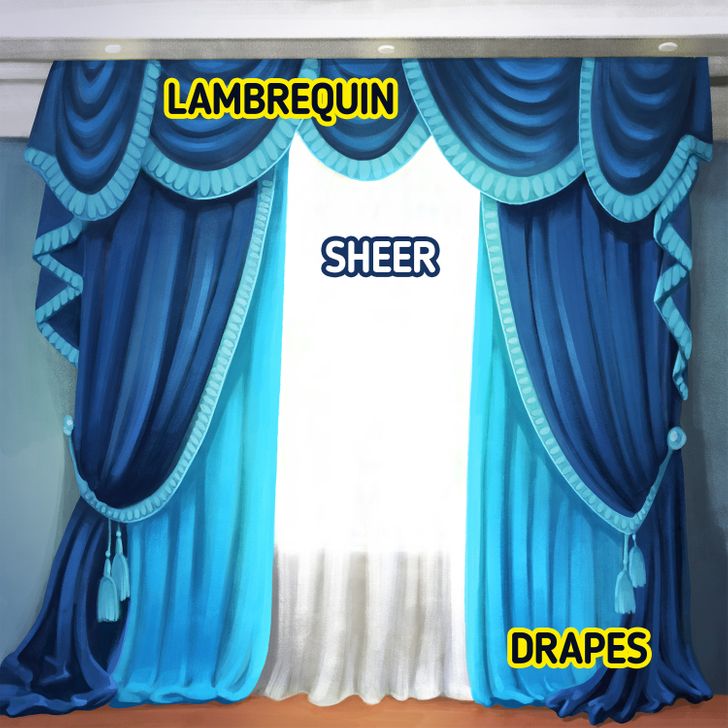
As you can see from the name, the curtains of this type slide apart and back together. The big pieces of fabric or any other material are adjusted to the curtain rod and can be easily moved to the left or right sides.
- Drapes are curtains from a very dense and light-blocking fabric (jacquard, velvet, or matting). It’s a traditional option for bedrooms. The drapes are adjusted to the rod with the help of loops, rings, and ties that are sewn to the edge of the drapes or with the help of eyelets and drawstrings.
Manufacturers constantly experiment both with the shapes of folds on curtains and their colors. For example, they create color block curtains that consist of colorful stripes; photo curtains, which are curtains that have some image printed on them; multi-layered blackout curtains that, apart from the decorative layer, have an outer white layer to reflect light.
Drapes most often go together with sheers.
- Sheers are light and airy curtains made of tulle, organza, or voile that gently diffuse light.
In order to give a finished look to the composition of drapes and sheers in classical interiors, they use various lambrequins, a horizontal draping that covers the rod.
- Priscilla curtains are crossed curtains that are normally hung on double rods to create an overlap. Also, they are bound with curtain tiebacks. The place where the 2 curtains cross can vary.
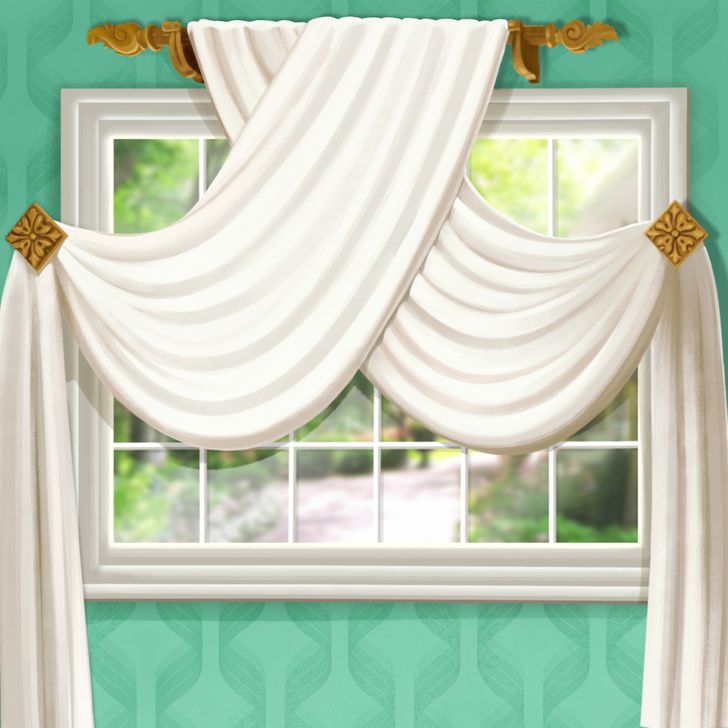
- String curtains are vertical threads or thin strips of sheer fabric on solid tape at the top (more seldom on hooks), and they are sometimes decorated with beads. They are close to drapes in terms of the atmosphere created by them in the room. String curtains are hung not only on windows but also in doorways. They are also used to zone the space of one room.
- Japanese curtains are long straight panels with weights on the bottom. Thanks to the special system of adjusting, they can move autonomously. Japanese curtains can be of different colors and made from different materials.
- Cafe curtains, unlike the previous types, cover only a part of the window: the lower half of the glass to the windowsill. In the past, they could be seen mainly in cafes or on trains, but now they are also found in apartments.
Shades and blinds
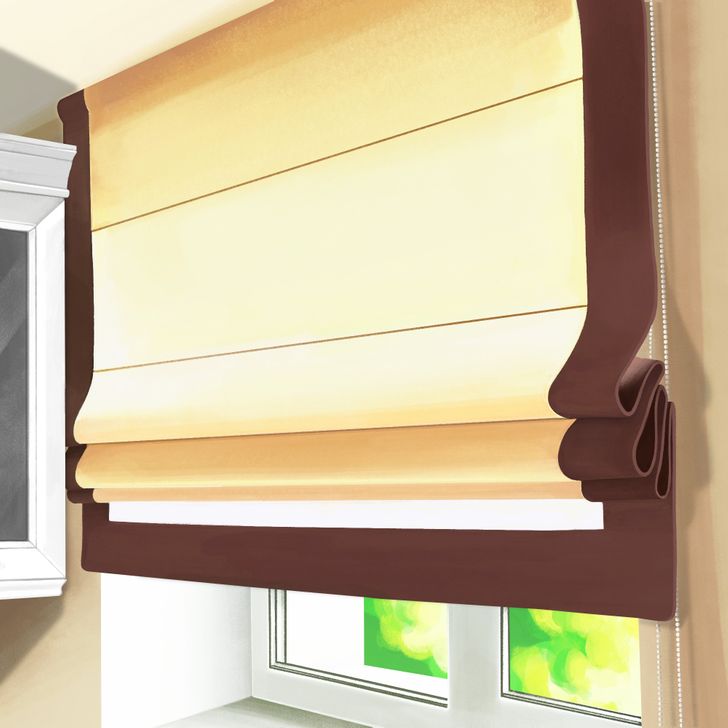
They are opened and shut vertically with the help of a special lifting mechanism. Before installing them, you need to take the precise measurements of the window because adjusting the curtains by size later is almost an impossible thing to do.
- Roller blinds are solid pieces of fabric that are rolled on a roller. It’s a good option for the kitchen but the lifting mechanism is sensitive to any skewness, which is why it’s necessary to use the level tool when installing them.
- Roman blinds are folded into straight horizontal folds according to the preliminary tailored lines. London shades are a more festive version of Roman curtains because, thanks to the additional fixation points, the lower edge turns into a kind of bow-knot.
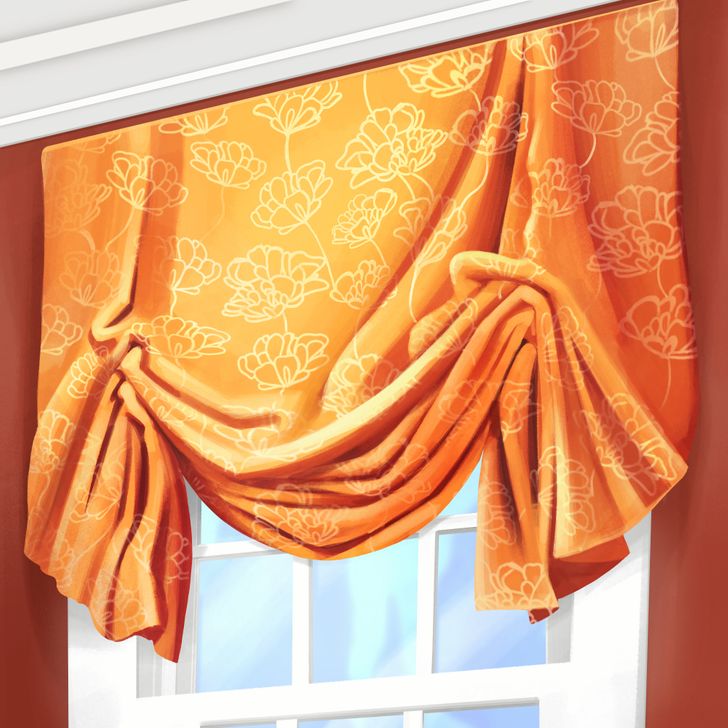
- The French curtains have wave-like semi-circular folds (festoons) that are located throughout the entire surface of the fabric. They are started at the stage of the pattern, so they don’t straighten when the curtain is fully open.
- Austrian curtains resemble French ones by the pattern of their lower edge, but they have a smooth fabric and are lifted like Roman shades.
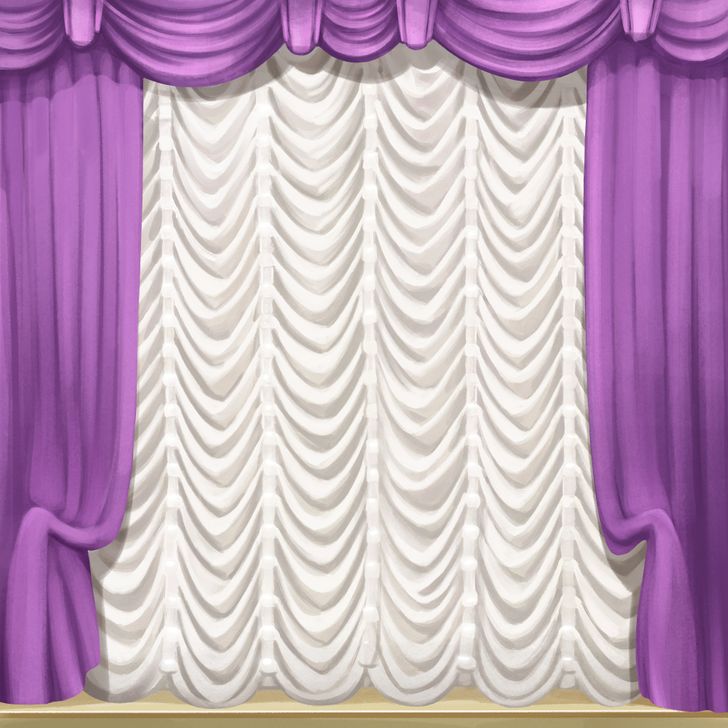
- Plisse curtains are curtains made of corrugated fabric (textiles or paper). Some manufacturers combine light-blocking material with semi-transparent fabric so that they can be alternated and get the popular and convenient type of curtains called “day-night.”
- Blinds look like plisse curtains, but depending on the position of slats (horizontal or vertical), they can be either of the lifting type or sliding.
Stationary curtains
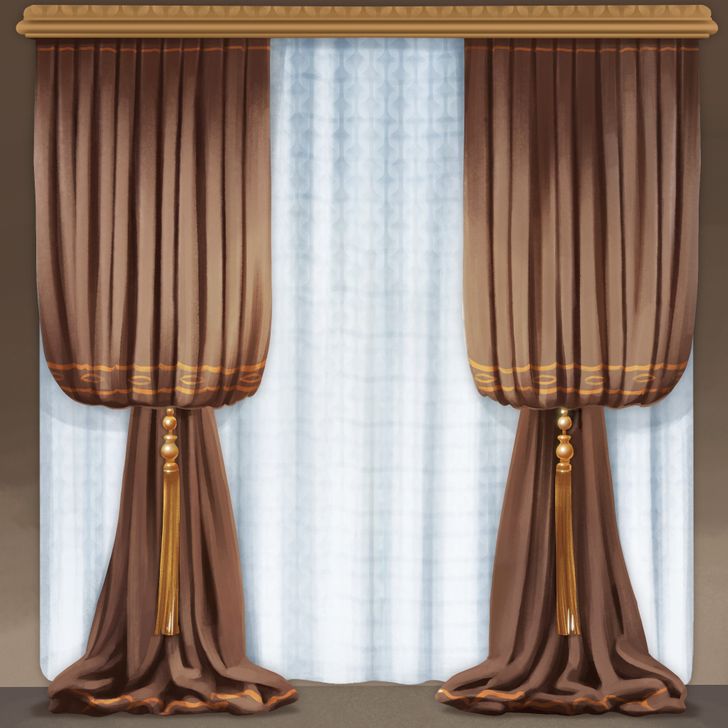
These are the curtains whose decorative part prevails over the functional one. Sometimes interior designers use them to imitate a window in the room.
- Italian curtains look like half-opened drapes but they’re static, which means their look and position can’t be changed, and the tiebacks are located at a certain level.
- The “bishop sleeve” can be recognized by the elegantly pouffed side of the drapery panel. Just like imperial curtains, this type of drapery is big and not quite practical.
- Vitrage curtains decorate glass doors or big windows on terraces. They are slightly tied with a ribbon or bows in the middle, that’s why they are sometimes called “hourglass.”
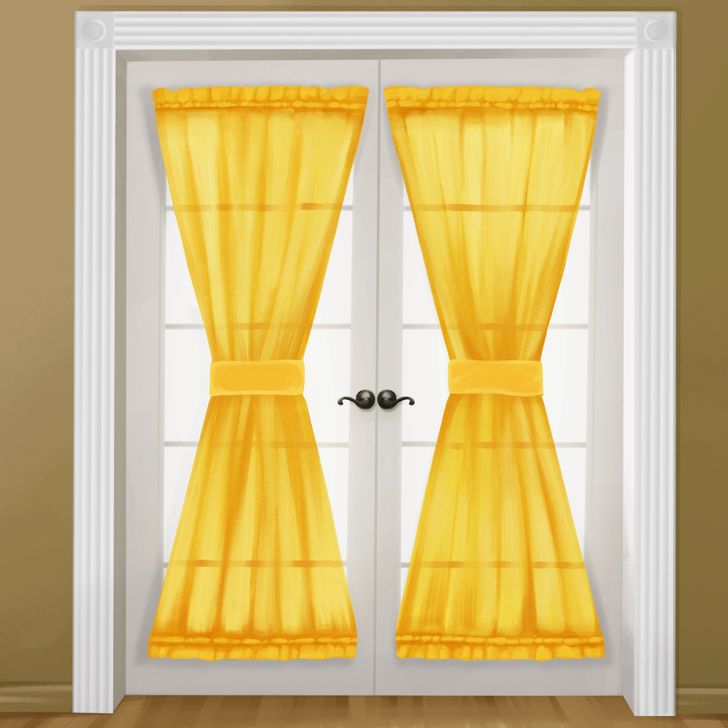
As a bonus, we want to tell you about smart curtains that fans of high-tech will definitely like. They can be opened with the help of remote control, which means you won’t need to get up from your bed, and they can also be programmed so that they’ll open up with the first sound of an alarm clock.